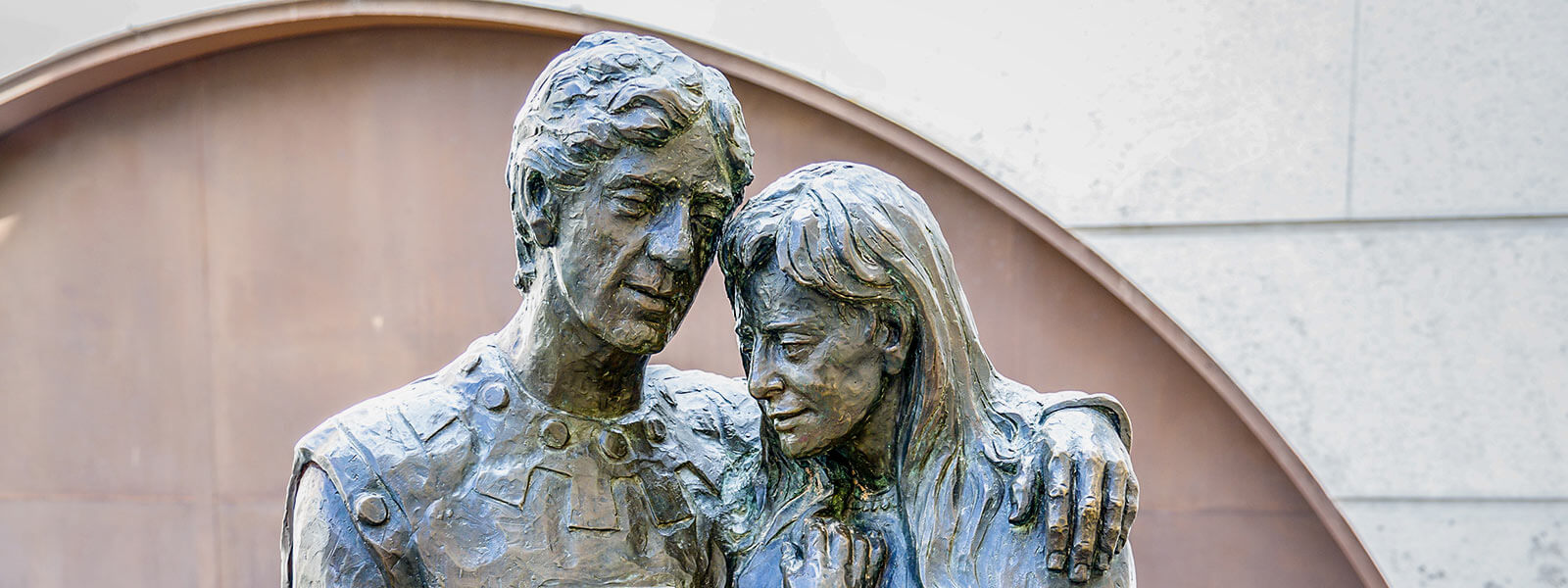
Spanish written works are receiving their due accolades. A few days ago it was announced that the Nobel prize for literature was being awarded to Mario Vargas Llosa and last weekend it was announced that the prestigious Planeta prize had been won by Eduardo Mendoza.
Mario Vargas Llosa was born in Arequipa (Peru) in 1936. After his parents separated it was his mother’s side of the family who looked after his education. Hence a key figure in his childhood was his grandfather, a diplomat and a cotton plantation administrator. It was he who helped the young Mario to understand the realities of Ibero-America.
At 14 years old, he was sent off to military school were he took French classes taught by the surrealist poet, César Moro. It was these classes which created his interest in literature and journalism and he left the school to start work on a newspaper in the city of Piura.
In 1953, he started at the National University of San Marcos (Universidad Nacional Mayor de San Marcos), where he studied law and literature. At this time he was very conscious of the problems in his country and became part of the Communist Party which at that time was an underground organization and it was his disappointment there that led him to later join the Democratic Christian party.
His literary career began in 1957 with several stories as he continued his work as a journalist. In 1958, he completed his university studies as a student with distinction in literature which earned him a postgraduate scholarship at the Complutense University of Madrid (Spain). Upon its conclusion in 1960, he decided to move to Paris.
In 1963, his first novel, La ciudad y los perros (The Time of the Hero) was published, based on his personal experience in military school. The work was a great success and won him the Spanish Critics Prize.
Two years later he followed it up with La casa verde (The Green House), which was set in Piura, the city in which he had first begun working. It was this novel dealing with life in a brothel, that converted him into becoming a reference in Spanish writing.
His following stories and novels continued to receive the favour of both the critics and the public. Amongst them are the well-known Conversación en la Catedral (Conversation in the cathedral), Pantaleón y las visitadoras, (Captain Pantoja and the Special Service), La tía Julia y el escribidor, (Aunt Julia and the Scriptwriter) and La Guerra del fin del mundo (The War at the End of the World).
This period of creativity continued through the 90’s and another period of political activism in which he presented himself as a presidential candidate for Peru. However, once again he became disillusioned with politics and returned to literature creating works such as the autobiograpical, El pez en el agua (A Fish in the Water), Los cuadernos de Don Rigoberto (Notebooks of Don Rigoberto) or the famous La fiesta del chivo (Feast of the Goat). Currently he is due to publish El sueño del celta (The Celt’s dream) about the colonial period in the Congo.
His mapping of power structures and scathing images of the individual, the rebellion and the defeat have earned him the highest recognition that can be bestowed upon a writer, the Nobel Prize.
Eduardo Mendoza, however, has not had such an exciting life as that of Vargas Llosa, but is also one of the most important figures in Spanish literature. He was born in Barcelona in 1943, son of a prosecutor and housewife. He studied law, completing his studies in London in 1965. He returned to Spain two years later to work as a lawyer but in 1973 was called upon by the United Nations as a translator.
In 1975, whilst living in New York, his first novel appeared, La verdad sobre el caso Savolta (The Truth about the Savolta Case) which despite being based in Catalonia in the early part of the 20th century, became the first significant novel about the democratic transition in Spain through its description of union struggles.
Continuing along the same lines of treating modern day problems through novels based in the past is La ciudad de los prodigios (The City of Marvels), published in 1986 and for many people his masterpiece.
Mendoza has also written a detective novel with a large dose of irony: The trilogy comprising, El misterio de la cripta embrujada (Mystery of the Bewitched Crypt), El laberinto de las aceitunas (The Labyrinth of the Olives) and La aventura del tocador de señoras (The Adventure of the Powder Room).
This year’s novel which has gained him a Planeta publishing prize of 601,000 euros is Riña de gatos (Cat Fight), a spy novel abandoning Barcelona for Madrid in 1936, just a few months before the Spanish Civil War began.
Without doubt, both are well deserved awards of which we are truly pleased.
-
 6 books to start reading in Spanish Discover the advantages of reading in Spanish if you are learning the language. Here are 6 books in Spanish that are perfect for beginners. Read in Spanish!
6 books to start reading in Spanish Discover the advantages of reading in Spanish if you are learning the language. Here are 6 books in Spanish that are perfect for beginners. Read in Spanish! -
 Love, the Spanish way In the Spanish literature there are many types of love present. Discover some examples of the Spanish way to love
Love, the Spanish way In the Spanish literature there are many types of love present. Discover some examples of the Spanish way to love -
 April 23, world book day April 23 is World Book Day. Probability, there is a fair or a commemorative event being celebrated in your hometown. Discover how it celebrate in Spain
April 23, world book day April 23 is World Book Day. Probability, there is a fair or a commemorative event being celebrated in your hometown. Discover how it celebrate in Spain

